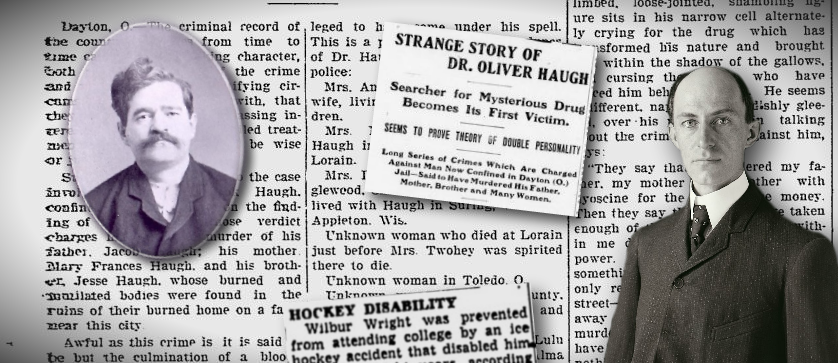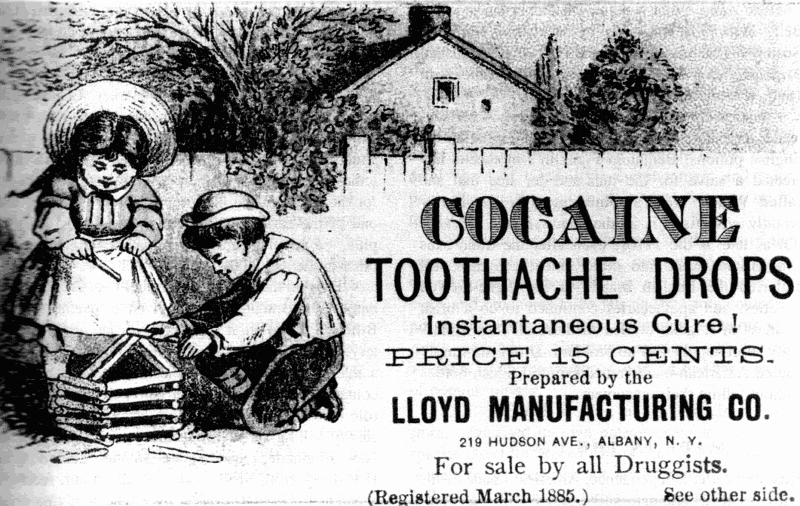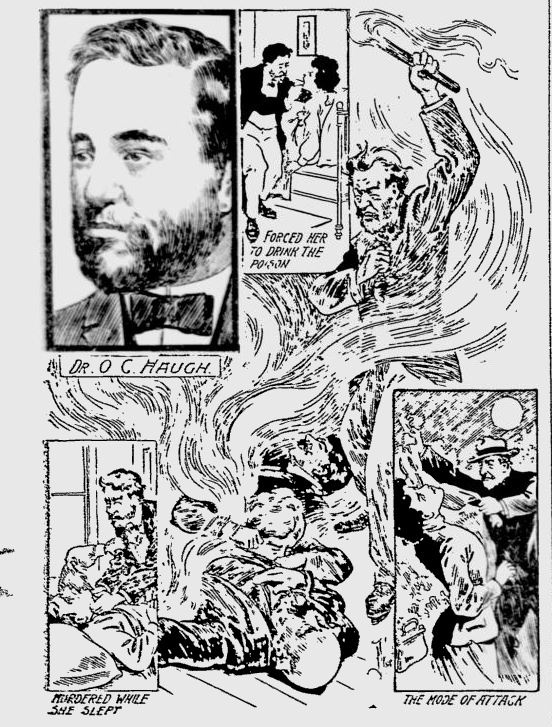What Does a Serial Killer and the First Airplane Have in Common?
By on Jun 14th 2017
Did a killer unintentionally change the course of aviation history as we know it?

In 2015, famed historian and Pulitzer Prize-winning author David McCullough released a new book, The Wright Brothers. Early in his text, he recounts an event that ultimately changed the course of Wilbur's life-and arguably the history of aviation as we know it.
As McCullough writes, the elder Wright brother was particularly good at everything he did. He was a star athlete, excelled in all his classes, and there were talks about the possibility of attending Yale in his future. But then everything changed in one foul blow.

One day in late 1885 or early 1886, teenage Wilbur was playing ice hockey with a group of friends on a frozen lake in Dayton, Ohio. The family had only moved to Dayton a few years prior from their home in Richmond, Indiana. This move had prevented Wilbur from receiving his diploma despite attending four years of high school.
During the game, Wilbur was hit in the face with a hockey stick, a blow which knocked out most of his upper front teeth. The exact events are difficult to determine. It could have been an accident or it could have been an intentional throw by the other party involved. What is known, however, is the identity of the individual who hit Wilbur: neighborhood bully Oliver Crook Haugh.
Accident or not, the event left its mark on Wilbur's life both physically and emotionally. Wilbur suffered face and jaw injuries, needed to be fitted with false upper teeth, and began suffering from serious digestive complications and heart palpitations, as well as depression.
Eventually, Wilbur recovered. Instead of going to Yale, however, he cared for his terminally ill mother, read from his father's library, and eventually worked with his brother in the printing business. Later the two opened a bicycle and repair shop and the rest is history.
Despite Wilbur's troubles post-hockey incident, his future really took off. The same can't be said about Oliver Crook Haugh, however. He grew up to become a serial killer.
The Strange Cases of Dr. Oliver Haugh
At the time of the incident in the mid-1880s, Haugh, three years Wilbur's junior, lived only 2 blocks away from the Wrights. He worked at a drugstore on West Third Street owned by Charles C. Francisco. He lived with his mother, father, and brother Jesse.
Suffering from painful rotting teeth, Haugh self-medicated with cocaine tooth drops and quickly became dependent on drugs. He also self-medicated with "cures" taken from medical pamphlets. These recipes were counterfeit versions of Bateman's Pectoral Drops taken from the King's American Dispensatory. The primary ingredient for this cure was opium. Haugh's addictions would affect him for the rest of his life and play a large role in what else was to come.

Despite his issues, he appeared competent in his work at mixing drugs. Local physician Otho Evans Francis suggested Haugh should become a doctor. Dr. Francis became his mentor and Haugh enrolled at the Cincinnati Medical College in 1888. However, his attendance was spotty due to financial struggles and his drug and alcohol problems. Despite these issues, he fell in love with a young woman named Anna Margaret Eckley. And thanks to the sudden death of her father, William Eckley (cause of death ruled pulmonary apoplexy), Haugh was able to move in with and marry Anna. Haugh used William Eckley's life insurance payout (which went to Anna) to go back to medical school. This time he attended the Miami Medical College (also in Cincinnati) but was asked to leave after one semester.
Haugh continued his medical pursuits and graduated from Louisville Medical College in the spring of 1893. He opened his own office March 10, 1894, in his hometown of Dayton, Ohio.
Haugh wanted to change science forever and create a new race of beings to evolve humanity. Influenced by Robert Louis Stevenson's 1886 book, Strange Case of Dr Jekyll and Mr Hyde, he believed that two beings could share a single body. He became his own guinea pig for his experiments.
"I am at work on the evolution of a drug, which in its perfection, will create a new era of science, a new order of thought, and a new race of beings. I will bring into the reality of day something more wonderful than Stevenson in his wildest dreams ever imagined. I will prove that which he only suggested--the certainty that two beings can exist in the one body, the one blotting out the influence of the other."
A Not-So-Smooth Criminal
Oliver Haugh's life might best be described as a series of ups and downs. Haugh would open a medical practice, but it would always ultimately close--sometimes barely after it had even opened. If he was ever sober (like the two times he was admitted into an asylum), he inevitably spiraled back into addiction. If he and his wife, Anna, were on okay terms, his violent outbursts would cause Anna to leave. She sought divorce several times, but things prevented her from following through, such as her two pregnancies.

Haugh was far from faithful. He had many affairs with various women and even married a couple--all while still married to Anna. A woman he dated in Toledo died suddenly. Many of his patients died under his care, too. In fact, he had such a bad reputation in his hometown of Dayton, Ohio, that he had to change towns and states for his new offices. During the time he offered mineral baths as treatment, he neglected them and killed several patients.
In 1900, Haugh was admitted to an asylum for the second time in his life. He was released in December. In 1901, he vanished to Milwaukee and ultimately started a new practice in Spooner, Wisconsin, where he touted himself as a "Doctor who could cure any disease." While in Wisconsin he married a woman named Delia Betters, was arrested for the death of a patient, then acquitted for said crime, and moved to Suring where a patient of his Overdosed on morphine. Despite some patient deaths, there were no major red flags and for once his practice did well.
But as with all aspects of Haugh's life, an upward trajectory never lasts too long. While the two were living in Michigan close to her mother, Delia discovered that he was married to another woman. When Delia left to have him charged with bigamy, Haugh went and took care of Delia's mother until her sudden death in 1903.
Delia didn't go to the authorities at Anna's behest, and Haugh went to an asylum in Lebanon, Ohio. While in Ohio he met and befriended Jenny Twoey and Dr. Samuel S. Hermann. Jenny and Haugh started a relationship and Haugh used Jenny's inheritance to start a new practice in Lima, Ohio. Haugh told Dr. Hermann that he had killed several women while performing abortions and wanted to kill his brother Jesse. Haugh also said he would kill him if he tried anything.
Suffice it to say, Haugh was a terrible influence on Jenny. He got her addicted to cocaine and morphine and the two of them opened a saloon in Cleveland. They were fined for operating a business where prostitution took place. Haugh practiced medicine from their vile business and wound up being arrested for disorderly conduct. While he was in jail, Jenny died. Upon his release, Haugh drifted and opened and closed offices constantly. Eventually, he made it back to Dayton and moved in with his family again, as Anna refused to live with him.
Haugh's Final Victims
 Oliver Crook Haugh's life was once again in that downward spiral. Anna filed for divorce (for real this time) and his parents cut him out of the will. Haugh threatened to kill them if they didn't put him back in their will. It didn't appear to be an idle threat.
Oliver Crook Haugh's life was once again in that downward spiral. Anna filed for divorce (for real this time) and his parents cut him out of the will. Haugh threatened to kill them if they didn't put him back in their will. It didn't appear to be an idle threat.
A little after midnight on November 5, 1905, the Haugh family home was on fire. When Haugh ran for help, he told the neighbors conflicting information about whether his family was still inside. He claimed that he had woken up to smoke in the room he shared with his brother. While he was able to escape, he said his brother became trapped, as did his parents.
Dr. Walter Z. Kline didn't buy Haugh's story one bit. Besides his fluctuating story, Haugh had ordered a large amount of oil pre-fire (and witnesses saw a trail of oil running through the house) as well as a rushed bulk order of hyoscine hydrobromide. Haugh had been given small doses on hyoscine as part of his treatment in the asylum, but in large quantities, the drug caused paralysis. Kline believed that Haugh had drugged his family and set the house on fire. The bodies themselves had been completely burned and mutilated. Haugh was taken into custody and arrested for murder.
On November 10, Haugh pled not guilty on the same day his family was buried (in a single casket because so little remains were left).
The case began on February 22. The trial lasted 10 days and 54 witnesses testified. His defense was insanity, but he was legally declared sane. Haugh was found guilty after a short jury deliberation. On April 19, 1907, Oliver Crook Haugh died via electric chair.
It was believed that Haugh had been married 9 times and 4 of his wives had died via hyoscine injections to the spine. The total amount of victims is unknown, but it is believed that at least 13 people died at the hands of Oliver Crook Haugh, a man who believed killing the infirm and insane was a good thing.
They say that I murdered my father , my mother and brother with hyoscine for the sake of the money. Then they say that when I have taken enough of the hyoscine the man within me disappears, and Hyde is the power. It seems and though I must do something--destroy something. My only recourse is to get out into the street--out into the open country--away from men and women, lest I murder them. It is possible for me to have murdered these people and know nothing of it . . . all that I do know is, that if I die for these crimes, I shall at least have established the proof of the theory on which I have always insisted--that two beings, one of good, the other of evil, may exist in the same man, and in that respect at least I shall have rendered a distinct service to posterity.
Where was Wilbur?
While Oliver Haugh's life was a roller coaster of bad and worse, the Wright Brothers Wilbur and Orville were working on making history. They used their bicycle shop to fund their interest in aviation and flight. On December 17, 1903, the brothers made four brief flights at Kitty Hawk, North Carolina, with their first powered aircraft.
Though the brothers shared credit for all their inventions equally, many believe that the older Wilbur was the driving force behind their work.
It's possible that without Oliver Haugh's teeth-breaking hit to the face, Wilbur wouldn't have ended up pursuing aviation. But to give Haugh that credit seems an injustice. Still, of all the lives Haugh took, he certainly didn't kill Wilbur Wright's future.
Sources:
Frey, Holly and Tracy V. Wilson. "Oliver Haugh, Serial Killer Pt.1." Stuff You Missed in History Class. Podcast. 11 April 2016. HowStuffWorks. Web. 30 May 2017.
Frey, Holly and Tracy V. Wilson. "Oliver Haugh, Serial Killer Pt.2." Stuff You Missed in History Class. Podcast. 13 April 2016. HowStuffWorks. Web. 30 may 2017.
Los Angeles Herald, Volume 34, Number 200, 19 April 1907: https://cdnc.ucr.edu/cgi-bin/cdnc?a=d&d=LAH19070419.2.14
"Strange Story of Dr. Oliver Haugh." Clinton Mirror. Dec. 30, 1905. https://news.google.com/newspapers?nid=2281&dat=19051230&id=LHgoAAAAIBAJ&sjid=2wUGAAAAIBAJ&pg=6199,4004357&hl=en
McCullough, David G. The Wright brothers. New York: Simon & Schuster, 2016. Print.







